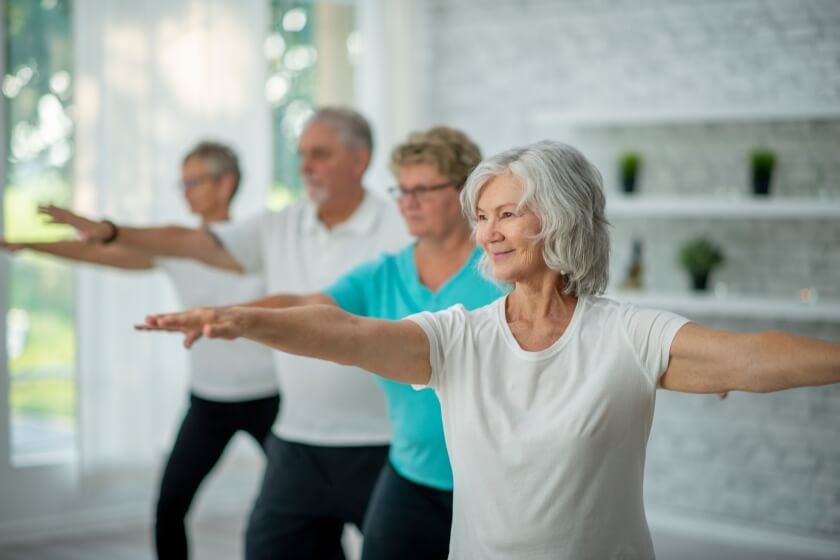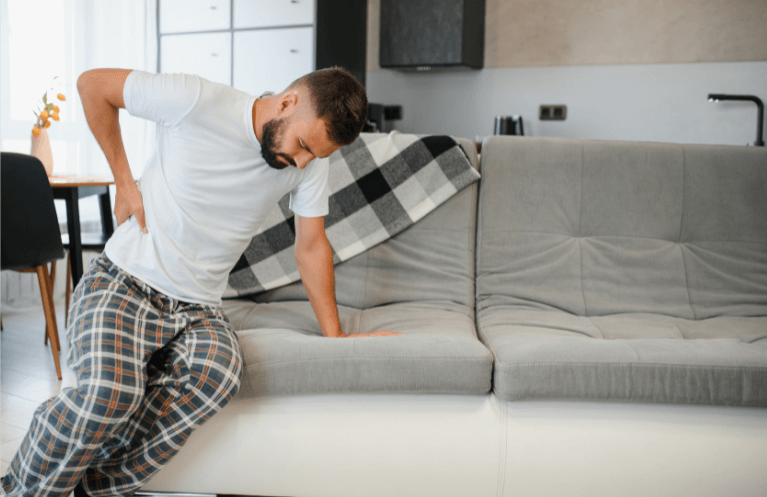Imagine this: you’re trying to get out of a chair, but your legs feel unsteady. You hesitate before stepping onto uneven ground. Climbing stairs? That’s now something you plan your day around avoiding.
For many older adults, these once-simple movements become daily obstacles. But the impact is far greater than just physical—when mobility begins to decline, it can affect confidence, independence, and overall quality of life. You may begin to avoid outings, decline invitations, or rely more on others for basic tasks.
The good news? It doesn’t have to be that way.
Physical therapy for seniors offers a proactive path to maintaining strength, improving balance, and preventing further decline. Whether you’re noticing subtle changes or already facing mobility challenges, a personalized approach to movement can help you feel more in control, safe, and independent.
How Physical Therapy Helps Seniors Improve Mobility
Physical therapy plays a vital role in elderly mobility improvement. It’s more than just stretches and exercises—it’s a tailored plan built around your goals, your comfort level, and your lifestyle.
At its core, physical therapy for seniors is about restoring confidence in movement. Therapists assess how you walk, how you rise from a chair, how you balance, and how you navigate everyday environments. Based on that, they develop a treatment plan that fits your needs and helps you meet your goals—whether it’s walking without a cane, managing stairs more easily, or simply getting through the day with less strain.
It’s not a one-size-fits-all approach. Instead, you’ll get expert guidance on safe exercises for seniors, as well as support through physical limitations, injury history, or health conditions like osteoporosis or arthritis.
Interventions to Improve Physical Function
Strength and Balance Training
As we age, it’s normal to lose muscle mass—but we don’t have to accept weakness as a given.
Strength training for older adults focuses on building back the muscle groups that help with walking, standing, and staying upright. Exercises may include seated leg lifts, wall push-ups, resistance band routines, and step-ups. These are all senior-friendly exercises that support both senior balance training and core strength.
Improving strength also helps reduce the effort needed for basic tasks—making it easier to carry groceries, get dressed, or navigate public spaces.
Gait Retraining and Assistive Devices
Many seniors find themselves shuffling or walking with hesitation, which can increase the risk of falls. Gait training for seniors focuses on helping you walk more smoothly and safely by improving posture, stride length, and foot placement.
If needed, your therapist may recommend mobility aids for seniors—like canes, walkers, or walking poles—and teach you how to use them correctly. It’s not just about the device; it’s about gaining confidence and energy in your everyday movement.
Pain Management
Pain can be a major barrier to movement. Whether it’s stiffness from arthritis or lingering discomfort from an old injury, physical rehabilitation for elderly patients often includes techniques to reduce discomfort and improve range of motion.
This may involve manual therapy (hands-on techniques to ease tight tissues), stretching, and the use of modalities like heat, cold, or ultrasound to soothe inflammation. You’ll also get education on body mechanics, pacing, and how to protect your joints while staying active.
Addressing the Fear of Falling
One of the biggest challenges for seniors isn’t just physical—it’s psychological. The fear of falling can cause people to stop doing the very things that keep them strong and capable.
A physical therapist helps you work through this gently. Starting with supported balance work, they gradually introduce more real-world challenges—like stepping over obstacles or walking on uneven surfaces—so that your confidence grows with your abilities.
This kind of senior fall prevention isn’t about bubble-wrapping your lifestyle—it’s about preparing your body and mind for what life throws at you.
Who Should Consider Rehabilitation?
You don’t need to be recovering from surgery or a major fall to benefit from physical therapy.
You might consider an evaluation if you’ve noticed:
- You’re walking slower or taking shorter steps
- You avoid certain activities due to fatigue, instability, or hesitation
- You’ve had a few close calls with tripping or stumbling
- You feel stiff getting out of chairs or bed
- You’re relying more on furniture or walls for support
These subtle signs are often the early indicators that mobility and strength may be declining—but with proper support, they can often be reversed.
Tips to Maintain Mobility and Independence
Staying independent in older age isn’t just about what happens in therapy. It’s also about building smart habits into your daily life.
1. Daily Movement Goals
Aim to move your body in some way every day—even if it’s just a walk around the house or light stretching in a chair. Staying consistent with senior mobility exercises helps keep muscles active and joints limber.
2. Stay Socially Engaged
Movement tends to follow motivation. Joining a walking group, taking a dance class, or attending social events gives you reasons to move and keeps you connected to your community.
3. Make Your Home Safer
Simple adjustments like removing throw rugs, installing grab bars, using night lights, and keeping pathways clear can go a long way in supporting independence in aging.
4. Check in with Your Healthcare Providers
Regular wellness checkups, vision screenings, and medication reviews can prevent small issues from becoming bigger problems. A physical therapist can also help monitor mobility over time and offer proactive solutions.
Final Thoughts: Aging Strong, Moving Well
Getting older doesn’t mean giving up the activities you love. It’s about finding the right strategies to stay strong, balanced, and independent—on your terms.
Whether you’re managing a condition, recovering from a setback, or simply want to move better, physical therapy offers tools to help you live confidently and independently at any age.
Mobility isn’t just about walking—it’s about living fully.
If you or someone you love is ready to take the next step toward lasting strength and independence, we invite you to schedule a Free Discovery Visit at our clinic. It’s a no-pressure opportunity to speak with a physical therapist, ask questions, and find out if care is right for you.
👉 Book Your Free Mobility Screening Today
Or call us today at 508‑223‑2300
New Workshop Announcement!
Also, keep an eye out for our upcoming workshop “Learning How to Fall and Get Back Up” on September 23rd, (Tuesday) from 5pm – 6pm
A hands-on exercise class that focuses on fall prevention—by teaching you exactly what it takes to stay strong, stay independent, and recover with confidence.
This is not your typical “be careful around rugs” kind of talk. This is an interactive, on-the-mat, movement-based session where you’ll practice real-life techniques to improve your balance, mobility, and reaction time. We’ll be sharing more details soon on our social media platforms soon!
Tags: PT, physical therapy, houghton physical therapy, mobility, senior, senior group, strength training, balance training



